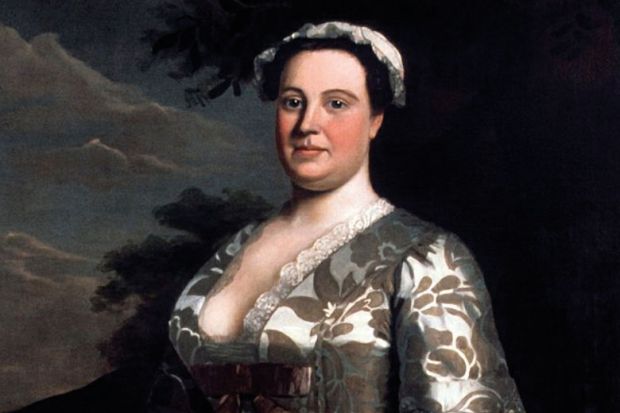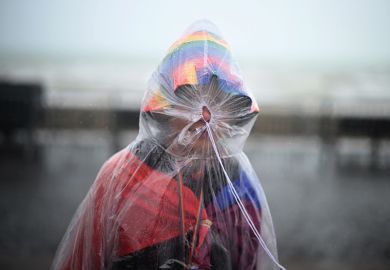In 1899, Thorstein Veblen published The Theory of the Leisure Class, in which he coined the term “conspicuous consumption” to describe how keeping up with the Joneses drives modern economic growth. Veblen’s theory has had enduring influence on historians of 18th-century Britain, arguably the birthplace of a modern demand-led “consumer revolution”. Debates continue about whether provincial towns across the British Empire merely emulated London, or whether people appropriated whatever metropolitan fashions suited their own purposes.
In Portrait of a Woman in Silk, Zara Anishanslin asserts the political, socio-economic and cultural distinctiveness of colonial American consumer culture. Following T. H. Breen, she argues that a “flowering of empire” occurred through the production, consumption and use of goods in the British Atlantic world. This was less about emulation than a shared sensory experience of material culture, dubbed a sensus communis by the author (quite often). The eponymous portrait turns out to be of Anne Shippen Willing (1710-91), a sturdy Philadelphian matron married to a wealthy Bristol-born merchant. Anne gave birth to 11 children (10 of whom, extraordinarily, survived to adulthood), and the Shippens were later famous as the financiers of the American Revolution.
Anishanslin’s book begins with the dress that Anne is wearing in her 1746 portrait by the Newport artist Robert Feke. She identifies this as damask silk woven to a pattern by the English designer Anna Maria Garthwaite and manufactured in Spitalfields, London by the master weaver Simon Julins. The “hidden” histories that she uncovers (calling them that always adds an extra thrill) are often fascinating: Julins not only wove a woman’s designs, he was apprenticed to a female weaver. Anishanslin insists, rightly, on women’s participation as producers (pace Garthwaite) as well as consumers in the 18th-century Atlantic world economy. Her analysis is attentive to the specific use and display of both the dress and its portrait in the colonial homes of Willing and her family, whose households included slaves and enjoyed wealth deriving from slave labour. Philadelphia was not like Bristol or Edinburgh, not least because polite society could at any moment be disrupted by violent raids by Native Americans on the Pennsylvanian frontier.
Lacking first-hand accounts by her four main protagonists, Anishanslin’s study relies on a range of engaging evidence, from the intensive farming of silkworms for their cocoons (they defecate a lot, apparently, and end up being boiled alive in huge vats) to the Georgian love of exotic botanicals and rococo fashions. This is mostly handled well, although plausibility is sometimes stretched: Garthwaite had many weavers living “on her block” and chose to worship at Christ Church Spitalfields “for career reasons”, making her sound like a modern New Yorker. More comparative demographic evidence would have helped: being widowed at “only” 44 years old might be seen as young today, but in the 18th century Willing had already exceeded average life expectancy. A gentlewoman breastfeeding her own children would have been singular in early 18th-century England, but not in colonial America.
For sure, objects linked the Atlantic world “across space, time and class”, and this is a successful exploration of an empire “of shared taste, aesthetics, and imagination formed around labour, commerce and display”. We would do well to meditate further on the historic and present-day inequalities that are produced and sustained in the complex web that enmeshes us globally as producers and consumers.
Helen Berry is professor of British history, Newcastle University, and author of The Castrato and His Wife (2012).
Portrait of a Woman in Silk: Hidden Histories of the British Atlantic World
By Zara Anishanslin
Yale University Press, 432pp, £30.00
ISBN 9780300197051
Published 31 August 2016
Register to continue
Why register?
- Registration is free and only takes a moment
- Once registered, you can read 3 articles a month
- Sign up for our newsletter
Subscribe
Or subscribe for unlimited access to:
- Unlimited access to news, views, insights & reviews
- Digital editions
- Digital access to THE’s university and college rankings analysis
Already registered or a current subscriber? Login






